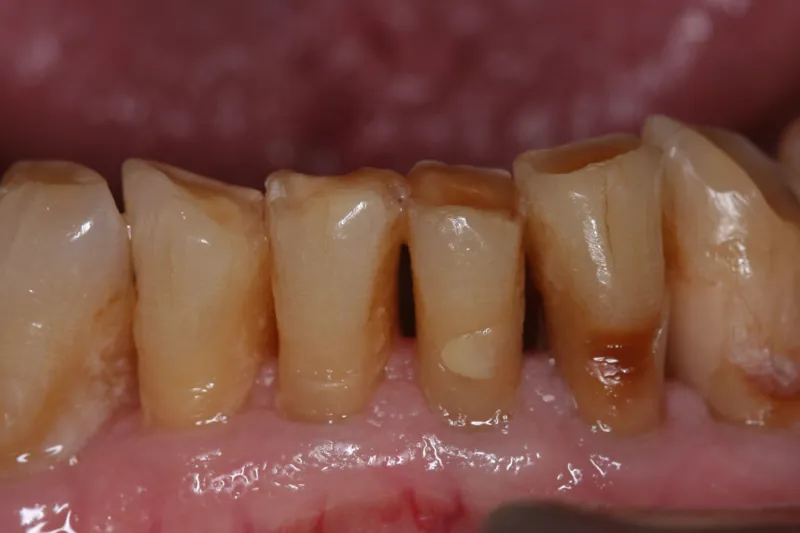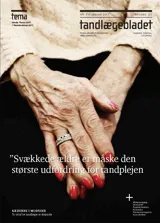Dental diseases and their treatment in the older population
Denne artikel har til formål at give et omfattende overblik over de unikke aspekter af mund- og tandsygdomme blandt de ældre med fokus på forekomsten af rodcaries og marginal parodontitis, der er de primære tandsygdomme, der typisk rammer et stort antal af ældre med egne tænder.

Tandsygdomme og deres behandling i den ældre del af befolkningen
Demografiske ændringer og et stigende antal af ældre voksne er en stor udfordring for tand- og mundsundhed i alle de nordiske lande. Risikoen for tandsygdomme stiger i aldrende befolkninger på grund af morbiditet, og nedgang i daglig funktionsevne og kognitive evner komplicerer mundhygiejne og evnen til at organisere besøg hos tandlægen. Desuden påvirker mange sygdomme og forskellige typer medicin spytafsondring, der øger risikoen for dental caries.
På den anden side påvirker selve aldringsprocessen immunsystemet og øger alvoren af fx marginal parodontitis og forekomsten af slimhindesygdomme i munden. Derfor synes mund- og tandsygdomme at forværres i de ældre befolkningsgrupper.
Denne artikel har til formål at give et omfattende overblik over de unikke aspekter af mund- og tandsygdomme blandt de ældre med fokus på forekomsten af rodcaries og marginal parodontitis, der er de primære tandsygdomme, der typisk rammer et stort antal af ældre med egne tænder. Der gøres også et forsøg på at beskrive håndteringsstrategier og fremhæve minimalt invasive behandlingsmuligheder for de ældre.
Klinisk relevans:
Management of root caries is the biggest challenge in the dental treatment of older patients. A management strategy should be based on good oral hygiene and effective preventive measures. Resin modified glass ionomer cements, (GICs), are usually the best restorative materials due to their good bonding ability to the dentine structure. Older patients’ healing responses to endodontic and periodontal therapies do not differ from those of younger adults. However, in difficult to treat cases, dental extraction is often the best way to eliminate periapical and periodontal infections. The primary treatment goal should always be elimination of oral pain and infections and the establishment good oral health.
Demographic changes and an increasing number of older adults is a big challenge for the oral health care in all the Nordic countries. The risk for dental diseases increases in older populations because morbidity, and reduced daily functioning and cognition complicate oral hygiene practices and the ability to organise dental visits. Futher, many morbidities and multiple drugs have effects on salivary flow which increases the risk for dental caries.
On the other hand, aging itself has effects on the immune system, increasing the severity of periodontitis and the prevalence of oral mucosal diseases, for example. Consequently, dental diseases seem to be concentrating in older age groups.
This article aims to provide a comprehensive overview of the unique aspects of dental diseases among older people, emphasizing the occurrence of root caries and periodontal diseases, which are the main dental diseases that typically involve a large number of dentate older people. It also attempts to describe management strategies and highlights minimally invasive treatment concepts for older people.


